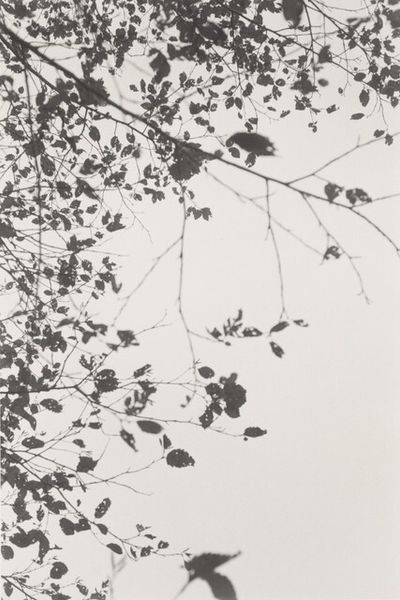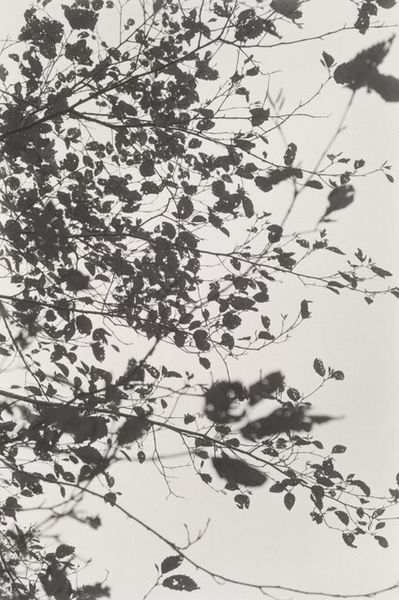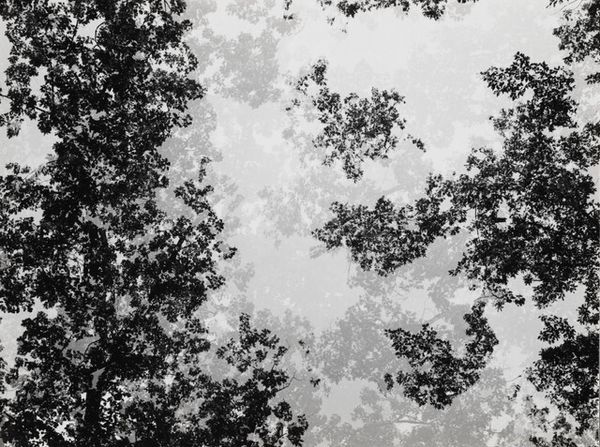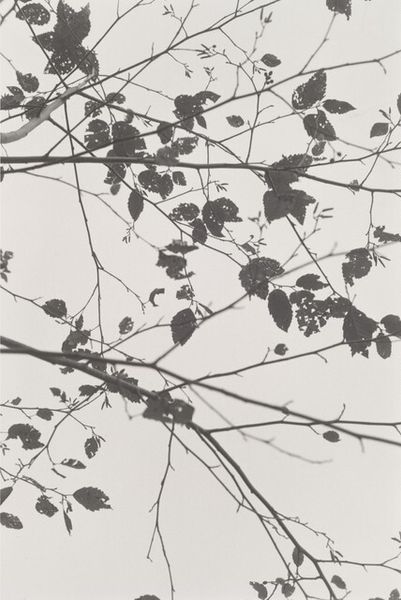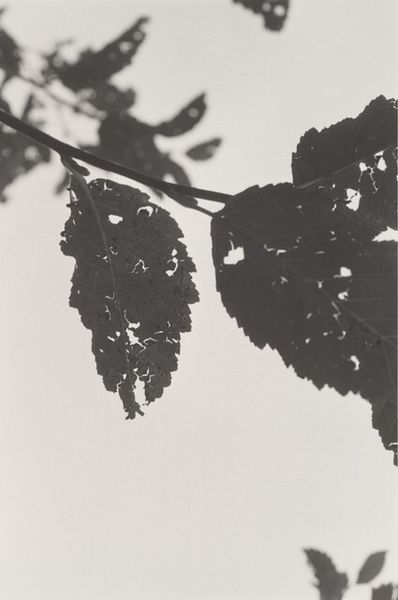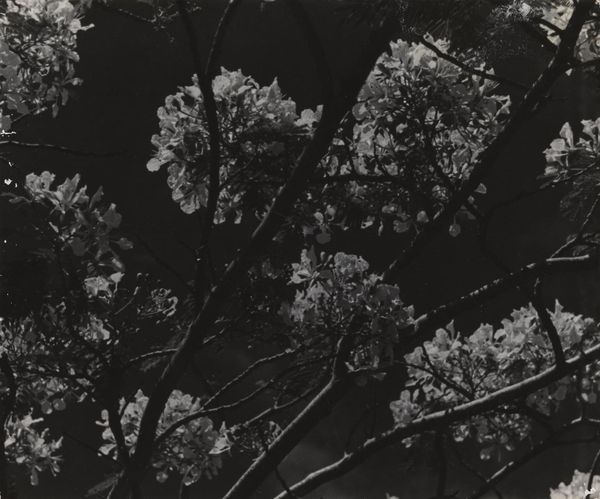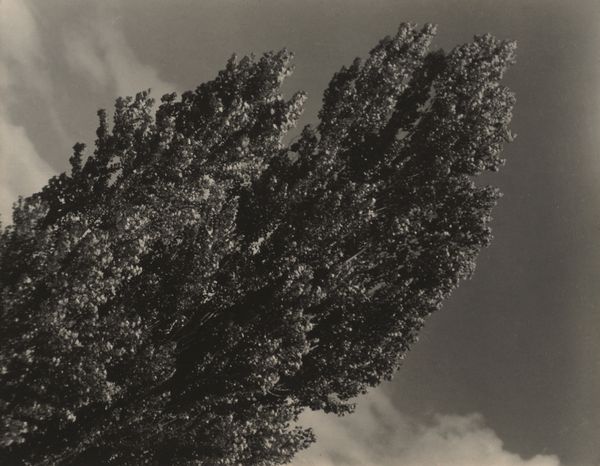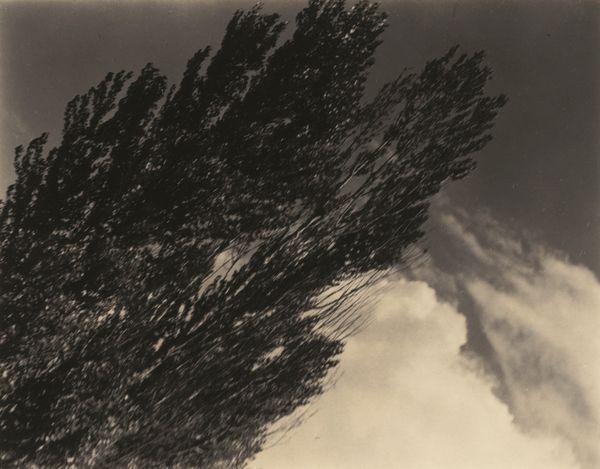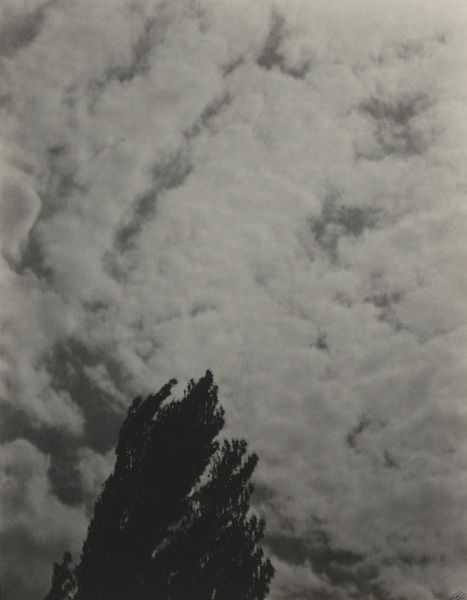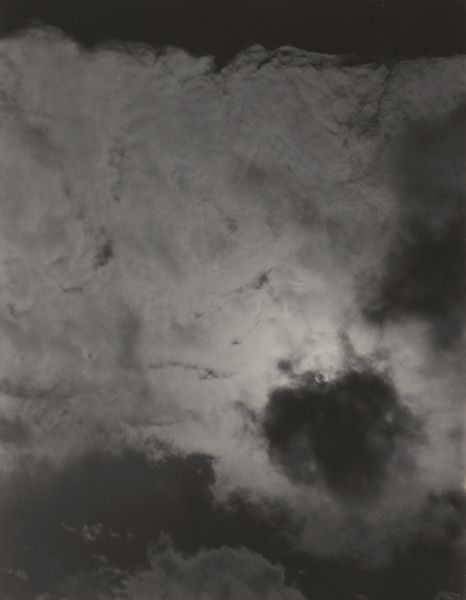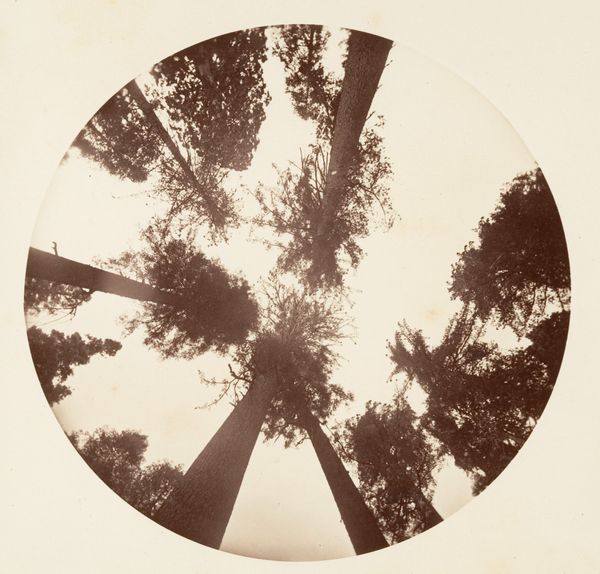
photography
#
landscape
#
photography
#
geometric
#
modernism
Dimensions: sheet (trimmed to image): 8.2 x 10.3 cm (3 1/4 x 4 1/16 in.) support: 8.9 x 12 cm (3 1/2 x 4 3/4 in.)
Copyright: National Gallery of Art: CC0 1.0
Editor: Here we have Harry Callahan's "Multiple Exposure Trees," created around 1943. It's a photograph, and I’m struck by how geometric it feels, despite being trees. How should we understand this choice of materials? Curator: Callahan's engagement with photography pushes against its documentary function, no? It prompts questions about photographic labor and its entanglement with "high art." This multiple exposure technique – repeating the image – calls attention to the artist's intervention in the capture and printing process. It emphasizes *making*, rather than passively recording, correct? Editor: It absolutely does. The repeated exposure almost flattens the trees, like a patterned textile. So are you saying Callahan is using the process to make a statement about craft? Curator: Precisely! Look how this process dematerializes the image to produce texture. By focusing on the technique, on the photographic *act*, Callahan elevates it beyond mere representation, into something akin to abstract expressionism in painting. Doesn’t it highlight how photography can be less about subject matter and more about the artist's engagement with the means of production? Editor: Yes, I can definitely see that! By foregrounding process, Callahan reveals a very different intention and aesthetic outcome than we often expect from nature photography. Is the act of multiplying and layering more meaningful than depicting one tree realistically? Curator: In a Materialist reading, absolutely. It shifts value from representing a pre-existing subject, toward Callahan’s transformative labor on the materials – film, light, and the darkroom. That this can also represent landscapes only speaks to how categories can overlap. What do you think? Editor: I think I now see the artwork through a different lens, looking less for the thing depicted and more toward what this thing is showing itself *being.* Thanks so much. Curator: Of course. By considering materials and processes, our perception shifts. This reminds us that art isn't solely about imagery, but is fundamentally about the social and material labor involved in its production and, eventually, our modes of interpreting its meaning.
Comments
No comments
Be the first to comment and join the conversation on the ultimate creative platform.
